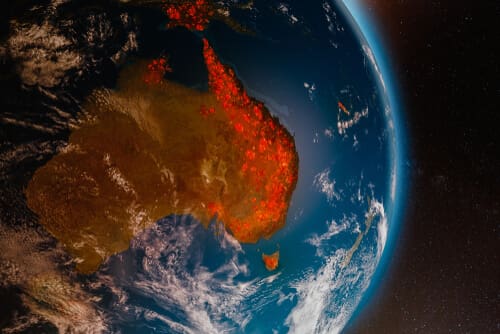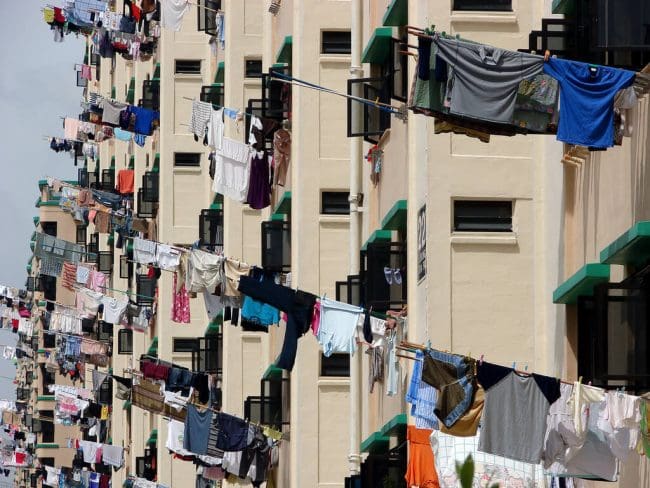As if the threat of global warming wasn’t bad enough, inaction by our politicians could hit our hip pockets, with mortgage interest rates rising faster than sea levels, as Sue Williams writes in Domain.
Home loan interest rates could be pushed up to “scary” levels if the main global lenders of cash consider Australia is dragging its feet on climate change action, economists have confirmed.
And with nearly a third of Australians already saying they face mortgage stress, the results could be catastrophic for many home buyers, and shut more of the next generation out of the housing market completely.
“I can’t forecast how much the cost of borrowing will increase if there isn’t meaningful action on climate change, but we know it will be higher,” said leading economist Nicki Hutley and a councillor with the Climate Council of Australia. “We could certainly see interest rates pushed up within the decade.
“When you think around the issues there already of housing affordability, it’s going to be very scary. Our kids are going to be well and truly impacted as well by the rises in the mortgage rate.”
Treasurer Josh Frydenberg sparked fears of rising interest rates last week when he talked of the need to cut greenhouse gases to net zero by 2050 – or risk international reprisals. He warned that reduced access to overseas capital markets would have an impact on the cost of home loans, business loans and infrastructure projects.
“Basically, because Australia is part of the global capital market, banks get some of their funding internationally,” said AMP Capitalchief economist Dr Shane Oliver. “We’re increasingly finding that international lenders are taking into account the green climate policies or green credentials of countries and companies they lend to.
“So as the world becomes more carbon-conscious, the likelihood is that more and more lenders will be less keen to lend to countries that aren’t seen to be playing their role in cutting their carbon emissions, so banks will have to lift their interest rates to attract them.”
Those rates could end up rising even further as the lenders re-assess the risks of loaning money to countries already deemed as more vulnerable to the effects of climate change, warns Hutley.
With the increasing frequency of large fire events, flooding and cyclones, and the potential damage of rising sea levels, she says sovereign debt costs have risen by 1.2 per cent on average over the last decade to those countries, which include Australia, and by 0.6 per cent on the private sector.
“So we have definite evidence that climate vulnerability leads to a greater risk assessment already,” she said. “I asked the Reserve Bank governor at a foundation launch recently about the implications of climate change on the interest rate and he also spoke of the potential for the costs of capital to rise.”
In addition, there’s also the chance of extra tariffs on Australia if we don’t commit to carbon reduction targets, through systems like the EU Carbon Border Adjustment Mechanism. G7 members could slam extra taxes on Australian imports to counter the impression that we’re getting a “free ride” while they’re undertaking emission cut measures at their own expense.
At The Australia Institute, chief economist Richard Denniss says interest rate rises could be still more dramatic than already projected if Australia doesn’t get into line.
“The Treasurer was right that foreign investors might start demanding an interest rate premium from us, but it’s worse than that,” he said. “If we’re seen as a high-risk place to invest because we’re heavily exposed to coal and iron ore as exports rather than tourism and education, and we keep telegraphing how we’re not going to diversify our economy, then our exchange rate is going to fall.
“Then, foreign investors will want an even higher interest rate to compensate for the low exchange rate in future.”
Australia’s Big 5 banks are already scrambling to polish up, and disclose, their green credentials to take advantage of global capital’s appetite “now on steroids” for doing business with companies who are showing interest in reducing carbon emissions, says Karl Mallon, the CEO of Climate Valuation that provides analysis for big banks and home-owners.
“So when capital wants to go to green places, there’s less available for elsewhere,” he said. “With little action on climate change, there’s more of a reluctance to grant mortgages and insurance for people likely to be affected.
“And we’re seeing climate change already starting to bite, with people getting flooded but unable to afford insurance.”
If you like this post or find it helpful, please share it with interested friends using the social media buttons. If you wish to respond, registered readers can add a comment at the foot of the story or, we’d prefer, on the Flat Chat Forum.
To subscribe (for free) to our weekly Flat Chat newsletter, bringing you the latest posts from this website, just click HERE




